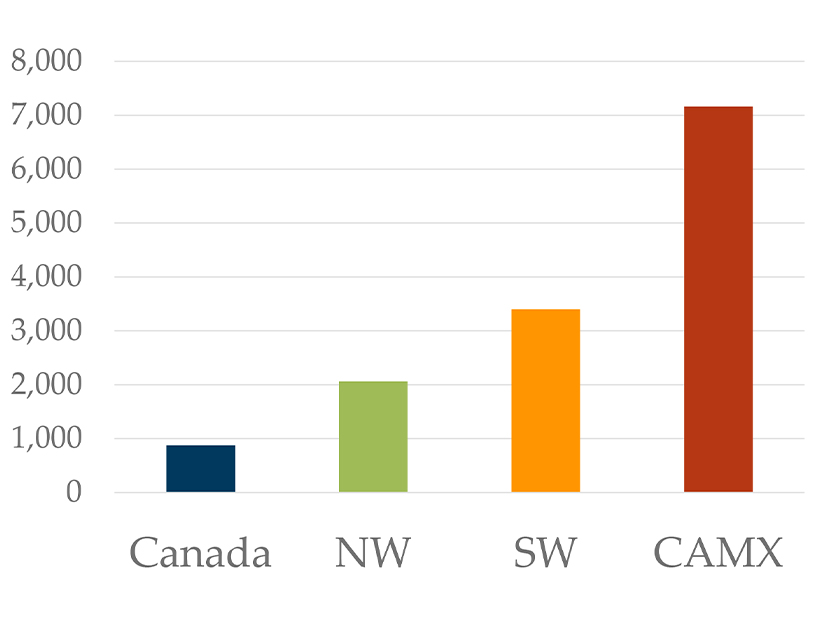Up to 13 GW of new generation and storage resources are planned to come online in the Western Interconnection by the end of this summer, helping to ensure the West remains resource adequate, but supply chain disruptions and other problems could undermine those plans, analysts said Thursday in the latest installment of WECC’s resource adequacy discussion series.
The West has been expecting “exponential growth” of clean energy resources, and this year could be the “turning point where we start seeing a huge ramp up,” said Matthew Elkins, WECC’s principal analyst for reliability assessments. But 13 GW by this summer is “a lot of resources to bring online with supply chain issues and things like that.”
Last year, new solar installations in the West fell nearly 3 GW short of expectations because of tariffs on solar panels from Southeast Asia and supply chain constraints, said Amanda Sargent, WECC senior resource adequacy analyst.
“There are always deviations from the plan year to year, usually small ones, but you can see in 2022, there was a large deviation in what was planned for solar capacity to come online in 2022 versus what did,” Sargent said. “We also saw an increase in the energy storage that was not able to come online, in part because it was usually a hybrid resource with the solar.”
In June 2022, President Joe Biden ordered a two-year waiver of the solar tariffs, and he is expected to veto a Senate resolution passed Wednesday to override his waiver. (See related story, Biden to Veto Bipartisan Rollback of Solar Tariff Moratorium.)
Most of the new resource additions will be solar, battery storage and wind, with some natural gas and biogas generation, WECC said.
Supply chain constraints could delay commissioning new generation and transmission resources and put off scheduled maintenance. For instance, 3.5 GW of new batteries are planned to come online by July and another 2 GW by September, but supply chain problems with battery components could reduce those amounts, Sargent said.
On the upside, retirements of existing generators through the summer should be minimal, she said.
WECC’s resource adequacy analysis gathers data from 38 balancing authorities in four regions of the Western Interconnection: California and a small part of Mexico; the Desert Southwest (Arizona and New Mexico); Canada (Alberta and British Columbia); and the Northwest, which covers the Pacific Northwest, the Rocky Mountain states, Utah and Nevada.
The results of WECC’s analysis showed no significant resource adequacy concerns except for short periods in California and the Northwest later this summer as hydroelectric power wanes. The analysis assumes the availability of imports and that thousands of megawatts of the new resources will come online.
The resources and imports are needed to cover the so-called net peak, after solar drops offline but demand remains high on hot evenings.
“All areas are resource adequate on the peak hour,” Sargent said. “However, we are seeing demand at risk outside of the peak hours. That is mediated if the resources that are planned come online on time, and if there is market availability for imports when it’s needed.”
In addition to supply chain problems, fuel constraints could reduce generating capacity, she said. A spike in natural gas prices drove up demand for coal, limiting supply, she said.
“We heard very loud and clear from our stakeholders that there are significant ongoing supply chain issues and fuel constraints that could impact connecting new resources, scheduling needed maintenance before summer and potentially the availability of transfer capabilities,” Sargent said.

